Detailed analysis of SMT patch and THT through hole plug-in PCBA three anti paint coating process and key technologies!
As the size of PCBA components becomes smaller and smaller, the density becomes higher and higher; The supporting height between devices and devices (the spacing between PCB and ground clearance) is also getting smaller and smaller, and the influence of environmental factors on PCBA is also increasing. Therefore, we put forward higher requirements on the reliability of PCBA of electronic products.
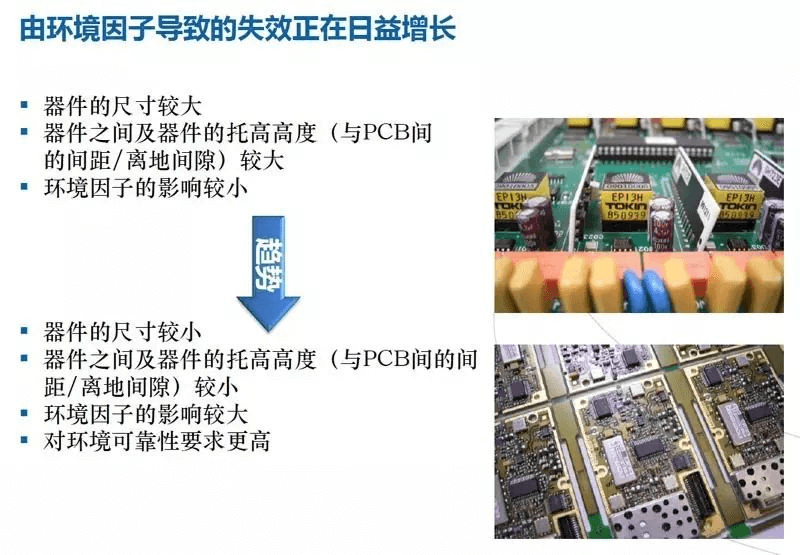
1.Environmental factors and their impact
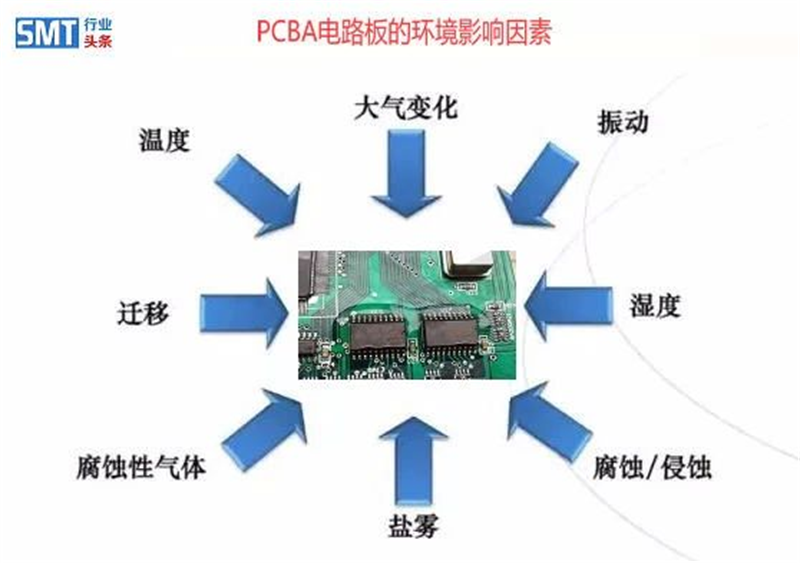
Common environmental factors such as humidity, dust, salt spray, mold, etc., may cause various failure problems of PCBA
Humidity
Almost all electronic PCB components in the external environment are at risk of corrosion, among which water is the most important medium for corrosion. Water molecules are small enough to penetrate the mesh molecular gap of some polymer materials and enter the interior or reach the underlying metal through the pinhole of the coating to cause corrosion. When the atmosphere reaches a certain humidity, it can cause PCB electrochemical migration, leakage current and signal distortion in high frequency circuit.
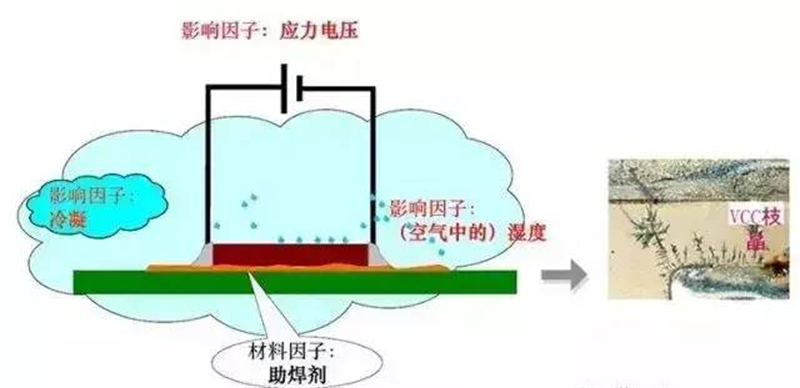
Vapor/humidity + ionic contaminants (salts, flux active agents) = conductive electrolytes + stress voltage = electrochemical migration
When the RH in the atmosphere reaches 80%, there will be a water film with a thickness of 5~20 molecules, and all kinds of molecules can move freely. When carbon is present, electrochemical reactions may occur.
When RH reaches 60%, the surface layer of the equipment will form 2~4 water molecules thick water film, when there are pollutants dissolve in, there will be chemical reactions;
When RH < 20% in the atmosphere, almost all corrosion phenomena stop.
Therefore, moisture-proof is an important part of product protection.
For electronic devices, moisture comes in three forms: rain, condensation and water vapor. Water is an electrolyte that dissolves large amounts of corrosive ions that corrode metals. When the temperature of a certain part of the equipment is below the "dew point" (temperature), there will be condensation on the surface: structural parts or PCBA.
Dust
There is dust in the atmosphere, dust adsorbed ion pollutants settle in the interior of electronic equipment and cause failure. This is a common problem with electronic failures in the field.
Dust is divided into two kinds: coarse dust is the diameter of 2.5~15 microns of irregular particles, generally will not cause fault, arc and other problems, but affect the connector contact; Fine dust is irregular particles with a diameter of less than 2.5 microns. Fine dust has certain adhesion on PCBA (veneer), which can only be removed by anti-static brush.
Hazards of dust: a. Due to dust settling on the surface of PCBA, electrochemical corrosion is generated, and the failure rate increases; b. Dust + humid heat + salt fog caused the greatest damage to PCBA, and the electronic equipment failure was the most in the chemical industry and mining area near the coast, desert (saline-alkali land) and the south of Huaihe River during the mildew and rain season.
Therefore, dust protection is an important part of the product.
Salt spray
The formation of salt spray: Salt spray is caused by natural factors such as ocean waves, tides, atmospheric circulation (monsoon) pressure, sunshine and so on. It will drift inland with the wind, and its concentration will decrease with the distance from the coast. Usually, the concentration of salt spray is 1% of the coast when it is 1Km from the coast (but it will blow farther in typhoon period).
The harmfulness of salt spray: a. damage the coating of metal structural parts; b. Acceleration of electrochemical corrosion speed leads to fracture of metal wires and failure of components.
Similar sources of corrosion: a. Hand sweat contains salt, urea, lactic acid and other chemicals, which have the same corrosive effect on electronic equipment as salt spray. Therefore, gloves should be worn during assembly or use, and the coating should not be touched with bare hands; b. There are halogens and acids in the flux, which should be cleaned and their residual concentration controlled.
Therefore, salt spray prevention is an important part of the protection of products.
Mold
Mildew, the common name for filamentous fungi, means "moldy fungi," tend to form luxuriant mycelium, but do not produce large fruiting bodies like mushrooms. In moist and warm places, many items grow on the naked eye some of the fuzzy, flocculent or cobweb shaped colonies, that is mold.
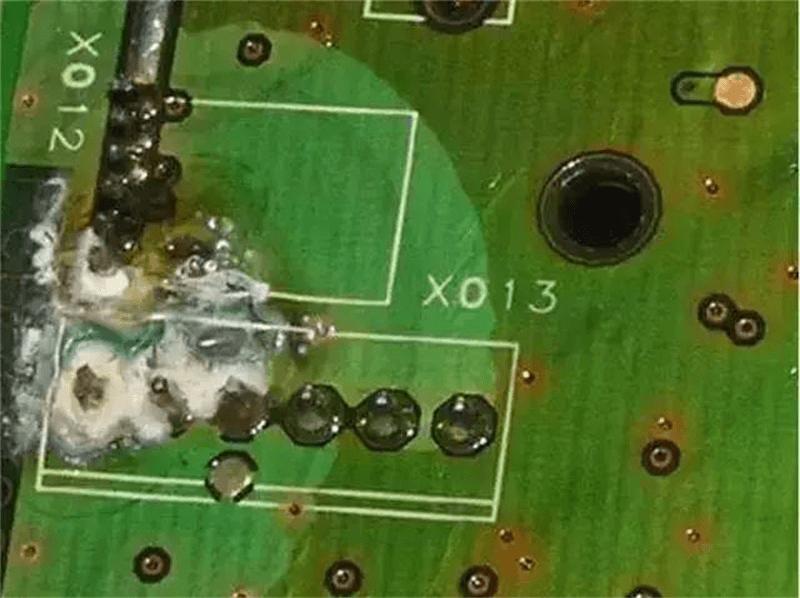
FIG. 5: PCB mildew phenomenon
Harm of mold: a. mold phagocytosis and propagation make the insulation of organic materials decline, damage and failure; b. The metabolites of mold are organic acids, which affect the insulation and electrical strength and produce electric arc.
Therefore, anti-mold is an important part of protection products.
Considering the above aspects, the reliability of the product must be better guaranteed, it must be isolated from the external environment as low as possible, so the shape coating process is introduced.
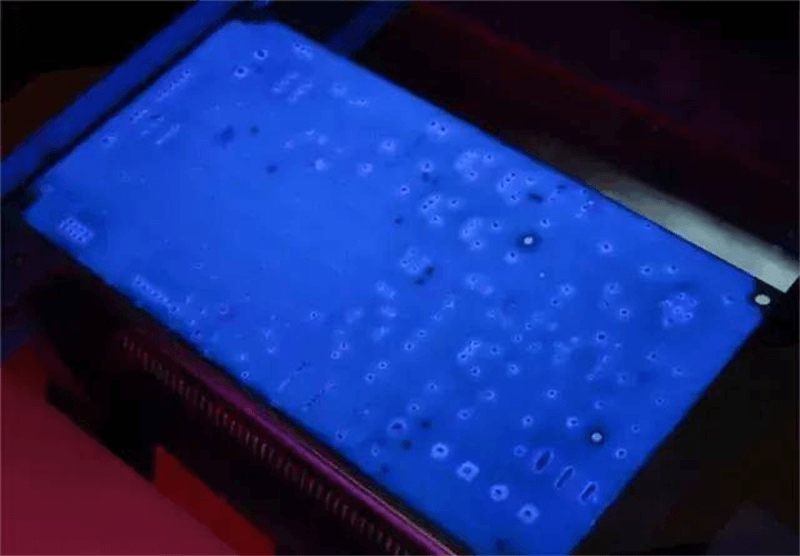
Coating PCB after coating process, under the purple lamp shooting effect, the original coating can be so beautiful!
Three anti-paint coating refers to coating a thin protective insulating layer on the surface of PCB. It is the most commonly used post-welding coating method at present, sometimes called surface coating and conformal coating (English name: coating, conformal coating). It will isolate sensitive electronic components from the harsh environment, can greatly improve the safety and reliability of electronic products and extend the service life of products. Three anti-paint coating can protect circuit/components from environmental factors such as moisture, pollutants, corrosion, stress, shock, mechanical vibration and thermal cycle, while improving the mechanical strength and insulation characteristics of the product.
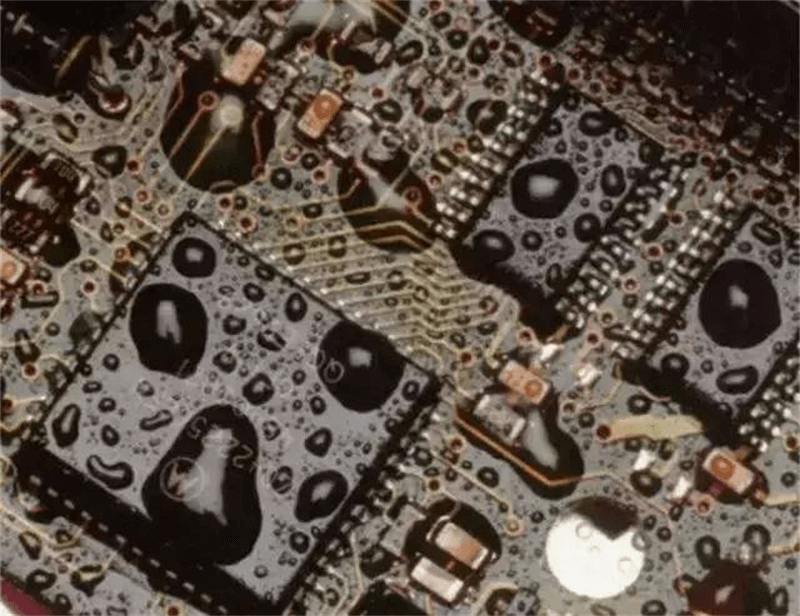
After coating process of PCB, form a transparent protective film on the surface, can effectively prevent water and moisture intrusion, avoid leakage and short circuit.
2. Main points of coating process
According to the requirements of IPC-A-610E(Electronic Assembly Testing Standard), it is mainly reflected in the following aspects:
Region
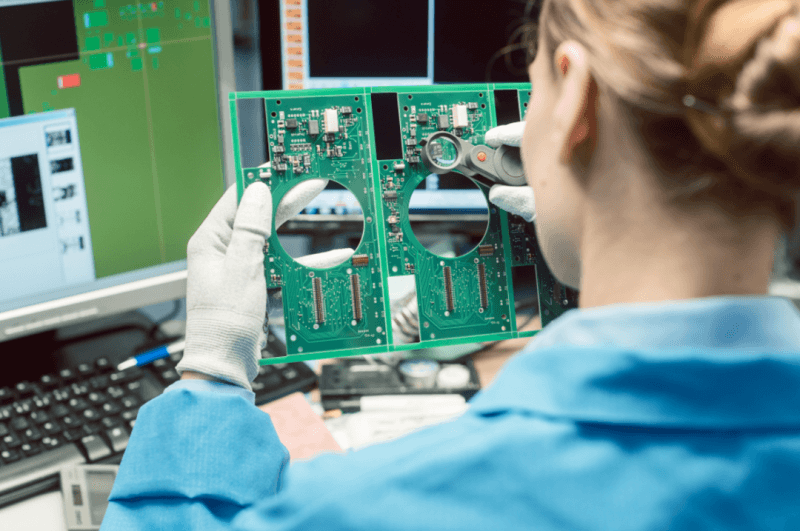
1. Areas that cannot be coated:
Areas requiring electrical connections, such as gold pads, gold fingers, metal through holes, test holes;
Batteries and battery fixers;
Connector;
Fuse and casing;
Heat dissipation device;
Jumper wire;
The lens of an optical device;
Potentiometer;
Sensor;
No sealed switch;
Other areas where coating may affect performance or operation.
2. Areas that must be coated: all solder joints, pins, components and conductors.
3. Optional areas
Thickness
Thickness is measured on a flat, unimpeded, cured surface of the printed circuit component or on an attached plate that undergoes the process with the component. Attached boards may be of the same material as printed boards or other non-porous materials, such as metal or glass. Wet film thickness measurement can also be used as an optional method of coating thickness measurement, as long as there is a documented conversion relationship between wet and dry film thickness.

Table 1: Thickness range standard for each type of coating material
Test method of thickness:
1. Dry film thickness measuring tool: a micrometer (IPC-CC-830B); b Dry Film thickness tester (iron base)
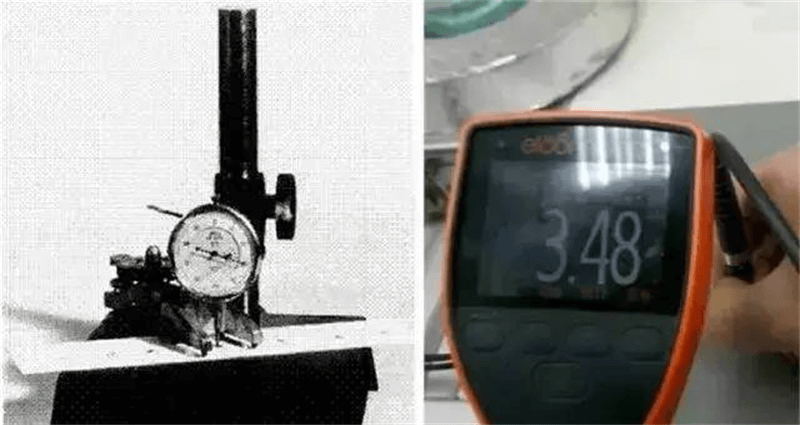
Figure 9. Micrometer dry film apparatus
2. Wet film thickness measurement: the thickness of wet film can be obtained by wet film thickness measurement instrument, and then calculated by the proportion of glue solid content
Thickness of dry film
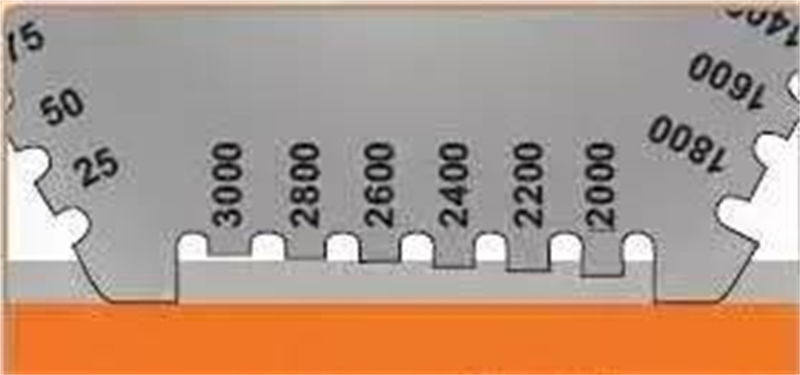
In FIG. 10, the wet film thickness was obtained by the wet film thickness tester, and then the dry film thickness was calculated
Edge resolution
Definition: Under normal circumstances, spray valve spray out of the line edge will not be very straight, there will always be a certain burr. We define the width of the burr as the edge resolution. As shown below, the size of d is the value of edge resolution.
Note: The edge resolution is definitely the smaller the better, but different customer requirements are not the same, so the specific coated edge resolution as long as to meet customer requirements.


Figure 11: Edge resolution comparison
Uniformity
Glue should be like a uniform thickness and smooth and transparent film covered in the product, the emphasis is on the uniformity of the glue covered in the product above the area, then, must be the same thickness, there is no process problems: cracks, stratification, orange lines, pollution, capillary phenomenon, bubbles.
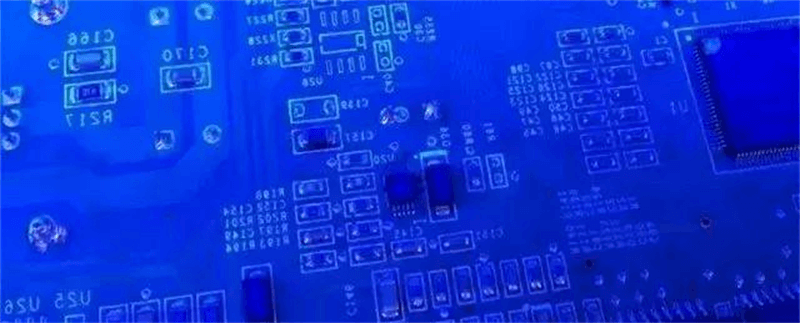
Figure 12: Axial automatic AC series automatic coating machine coating effect, uniformity is very consistent
3. The realization of coating process
Coating process
1 Prepare
Prepare products and glue and other necessary items;
Determine the location of local protection;
Determine key process details
2: Wash
Should be cleaned in the shortest time after welding, to prevent welding dirt is difficult to clean;
Determine whether the main pollutant is polar, or non-polar, in order to choose the appropriate cleaning agent;
If alcohol cleaning agent is used, safety matters must be paid attention to: there must be good ventilation and cooling and drying process rules after washing, to prevent the residual solvent volatilization caused by explosion in the oven;
Water cleaning, with alkaline cleaning liquid (emulsion) to wash the flux, and then rinse with pure water to clean the cleaning liquid, to meet the cleaning standards;
3. Masking protection (if no selective coating equipment is used), that is, mask;
Should choose non-adhesive film will not transfer the paper tape;
Anti-static paper tape should be used for IC protection;
According to the requirements of drawings for some devices to shield protection;
4. Dehumidify
After cleaning, the shielded PCBA (component) must be pre-dried and dehumidified prior to coating;
Determine the temperature/time of pre-drying according to the temperature allowed by PCBA (component);
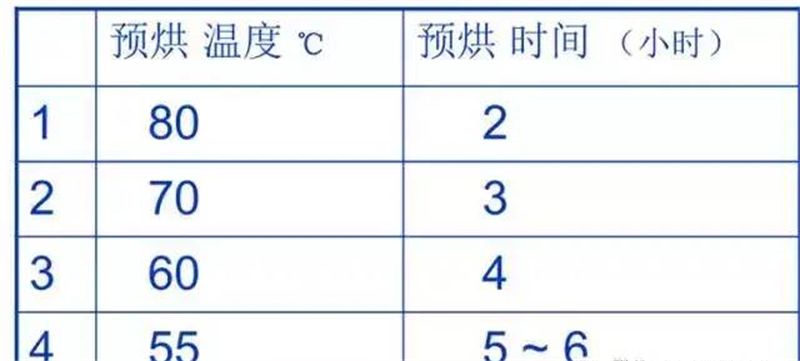
PCBA (component) can be allowed to determine the temperature/time of pre-drying table
5 Coat
The process of shape coating depends on the PCBA protection requirements, the existing process equipment and the existing technical reserve, which is usually achieved in the following ways:
a. Brush by hand
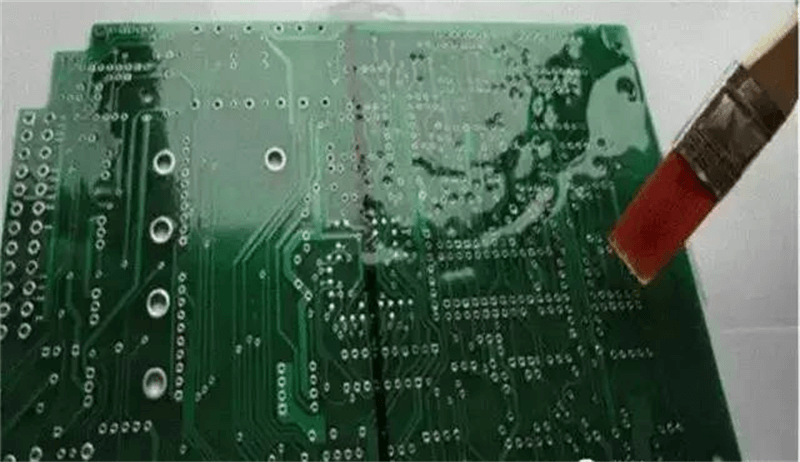
Figure 13: Hand brushing method
Brush coating is the most widely applicable process, suitable for small batch production, PCBA structure complex and dense, need to shield the protection requirements of harsh products. Because the brush coating can be freely controlled, so that the parts that are not allowed to paint will not be polluted;
Brush coating consumes the least material, suitable for the higher price of the two-component paint;
The painting process has high requirements on the operator. Before construction, the drawings and coating requirements should be carefully digested, the names of PCBA components should be recognized, and the parts that are not allowed to be coated should be marked with eye-catching marks;
Operators are not allowed to touch the printed plug-in with their hands at any time to avoid contamination;
b.Dip by hand
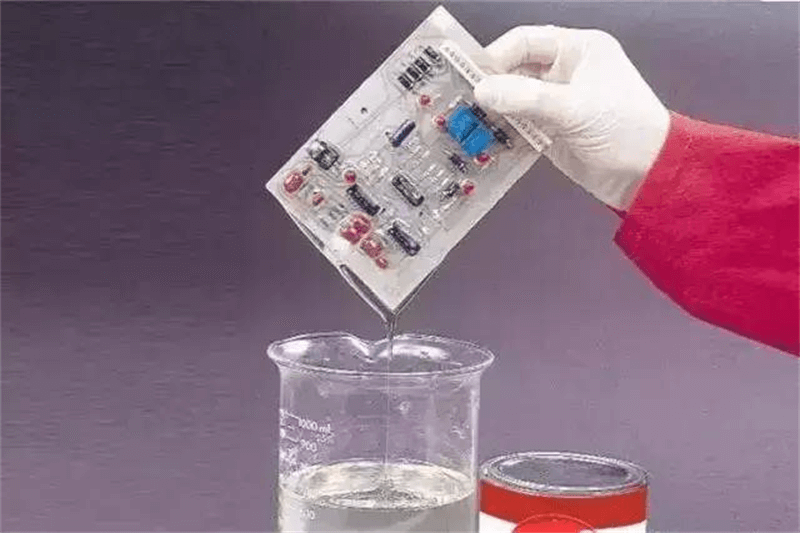
Figure 14: Hand dip coating method
The dip coating process provides the best coating results. A uniform, continuous coating can be applied to any part of the PCBA. The dip coating process is not suitable for PCbas with adjustable capacitors, fine-tuning magnetic cores, potentiometers, cup-shaped magnetic cores and some parts with poor sealing.
Key parameters of dip coating process:
Adjust the appropriate viscosity;
Control the speed at which the PCBA is lifted to prevent bubbles from forming. Usually no more than 1 meter per second;
c. Spraying
Spraying is the most widely used, easy to accept the process method, divided into the following two categories:
① Manual spraying
Figure 15: Manual spraying method
Suitable for the workpiece is more complex, difficult to rely on automation equipment mass production situation, also suitable for the product line variety but less situation, can be sprayed to a more special position.
Note to manual spraying: paint mist will pollute some devices, such as PCB plug-in, IC socket, some sensitive contacts and some grounding parts, these parts need to pay attention to the reliability of the shelter protection. Another point is that the operator should not touch the printed plug with his hand at any time to prevent contamination of the plug contact surface.
② Automatic spraying
It usually refers to automatic spraying with selective coating equipment. Suitable for mass production, good consistency, high precision, little environmental pollution. With the upgrading of industry, the increase of labor cost and the strict requirements of environmental protection, automatic spraying equipment is gradually replacing other coating methods.
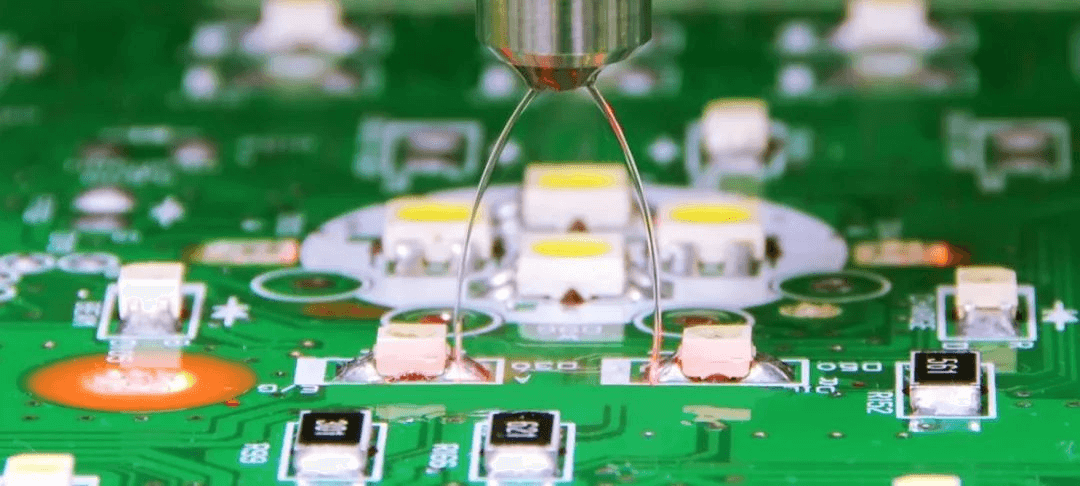
With the increasing automation requirements of industry 4.0, the focus of the industry has shifted from providing appropriate coating equipment to solving the problem of the entire coating process. Automatic selective coating machine - coating accurate and no waste of material, suitable for large quantities of coating, most suitable for large quantities of three anti-paint coating.
Comparison of automatic coating machine and traditional coating process
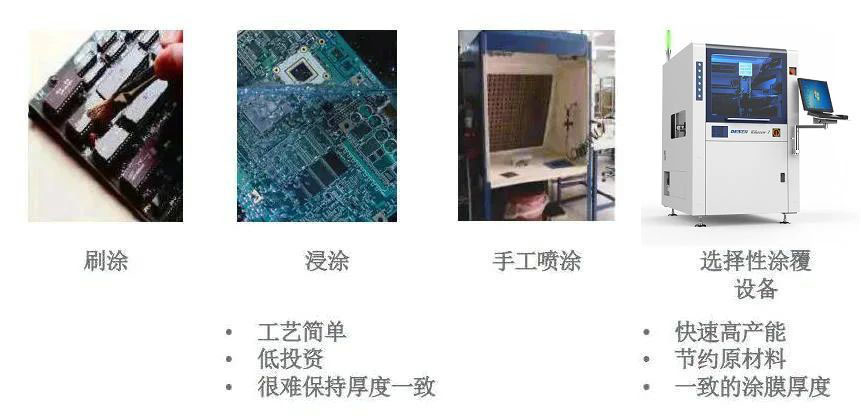
Traditional PCBA three-proof paint coating:
1) Brush coating: there are bubbles, waves, brush hair removal;
2) Writing: too slow, precision can not be controlled;
3) Soaking the whole piece: too wasteful paint, slow speed;
4) Spray gun spraying: to fixture protection, drift too much
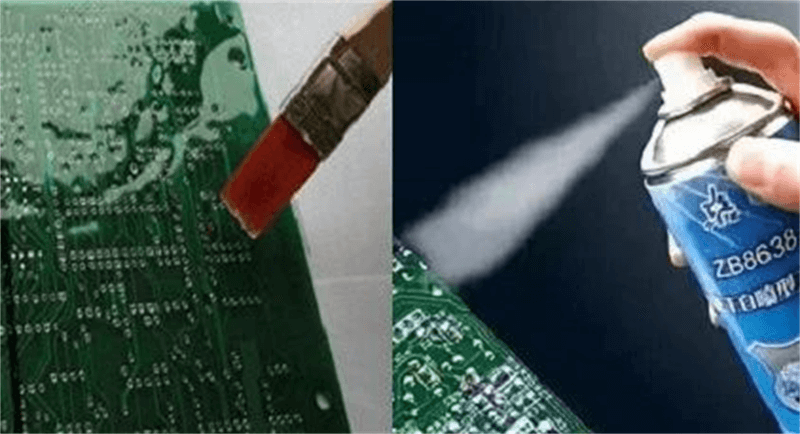
Coating machine coating:
1) The amount of spray painting, spray painting position and area are set accurately, and there is no need to add people to wipe the board after spray painting.
2) Some plug-in components with large spacing from the edge of the plate can be painted directly without installing the fixture, saving the plate installation personnel.
3) No gas volatilization, to ensure a clean operating environment.
4) All the substrate does not need to use fixtures to cover the carbon film, eliminating the possibility of collision.
5)Three anti-paint coating thickness uniform, greatly improve production efficiency and product quality, but also avoid paint waste.
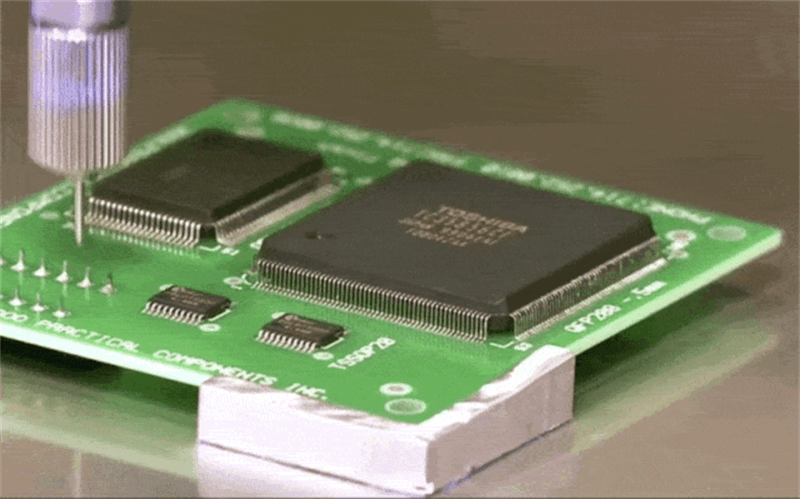
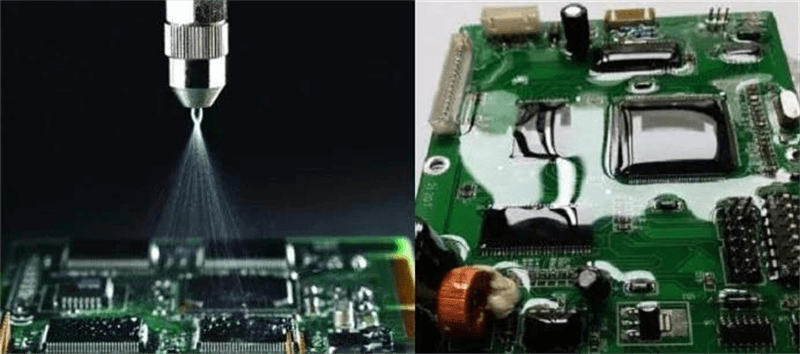
PCBA automatic three anti paint coating machine, is specially designed for spraying three anti paint intelligent spraying equipment. Because the material to be sprayed and the spraying liquid applied is different, the coating machine in the construction of the equipment component selection is also different, three anti-paint coating machine adopts the latest computer control program, can realize the three-axis linkage, at the same time equipped with a camera positioning and tracking system, can accurately control the spraying area.
Three anti-paint coating machine, also known as three anti-paint glue machine, three anti-paint spray glue machine, three anti-paint oil spray machine, three anti-paint spray machine, is specially for fluid control, on the PCB surface covered with a layer of three anti-paint, such as impregnation, spraying or spin coating method on the PCB surface covered with a layer of photoresist.
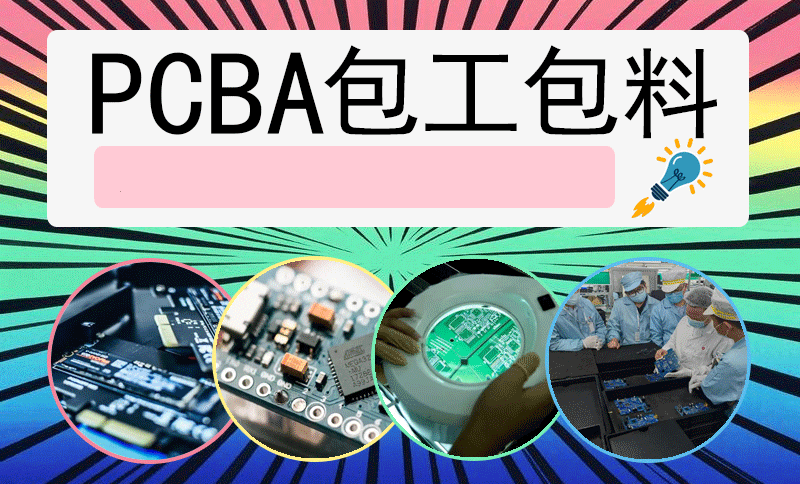
How to solve the new era of three anti paint coating demand, has become an urgent problem to be solved in the industry. The automatic coating equipment represented by precision selective coating machine brings a new way of operation, coating accurate and no waste of materials, the most suitable for a large number of three anti-paint coating.




